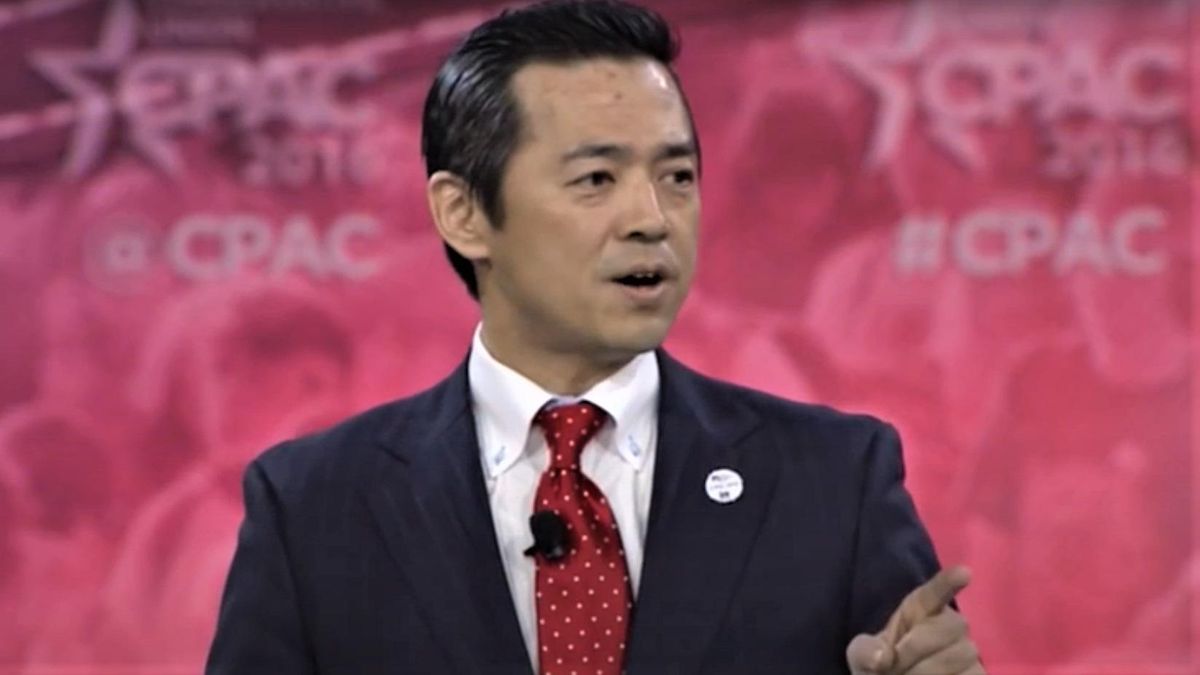Donald Trump Jr. is the CPAC warm-up act for a speaker from a cult that believes its leader is a reincarnated alien
NOT DAVID ICKE
Brad Reed
February 26, 2021

Screen cap/YouTube
One speaker at this weekend's Conservative Political Action Conference belongs to a Japanese cult that believes its leader is a reincarnated alien from Venus who was responsible for creating all life on Earth.
Vice News reports that Jikido "Jay" Aeba, a regular speaker at CPAC events, is a major figure in an organization called Happy Science that has a series of bizarre beliefs and is notorious for peddling "miracle cures" for the novel coronavirus.
Sarah Hightower, a cult researcher who has studied Happy Science, describes it to Vice as a "cult run by a man who claims to be the incarnation of multiple Gods while pretending to channel the psychic spirits of anyone from Quetzalcoatl to Bashar al-Assad to Natalie Portman."
Although Aeba is not the founder of Happy Science, he did found its political branch, a Japanese Party called Happiness Realization Party (HRP), which is a far-right nationalist party akin to the Brexit Party formed by Trump ally Nigel Farage in the United Kingdom.
"In the 12 years since it was formed, the HRP has failed to get a single candidate elected to Japan's parliament," reports Vice. "But in recent years, under Aeba's leadership, the group has gained more political legitimacy back home by aligning itself with right-wing U.S. figures like Steve Bannon and Matt Schlapp."
February 26, 2021

Screen cap/YouTube
One speaker at this weekend's Conservative Political Action Conference belongs to a Japanese cult that believes its leader is a reincarnated alien from Venus who was responsible for creating all life on Earth.
Vice News reports that Jikido "Jay" Aeba, a regular speaker at CPAC events, is a major figure in an organization called Happy Science that has a series of bizarre beliefs and is notorious for peddling "miracle cures" for the novel coronavirus.
Sarah Hightower, a cult researcher who has studied Happy Science, describes it to Vice as a "cult run by a man who claims to be the incarnation of multiple Gods while pretending to channel the psychic spirits of anyone from Quetzalcoatl to Bashar al-Assad to Natalie Portman."
Although Aeba is not the founder of Happy Science, he did found its political branch, a Japanese Party called Happiness Realization Party (HRP), which is a far-right nationalist party akin to the Brexit Party formed by Trump ally Nigel Farage in the United Kingdom.
"In the 12 years since it was formed, the HRP has failed to get a single candidate elected to Japan's parliament," reports Vice. "But in recent years, under Aeba's leadership, the group has gained more political legitimacy back home by aligning itself with right-wing U.S. figures like Steve Bannon and Matt Schlapp."








